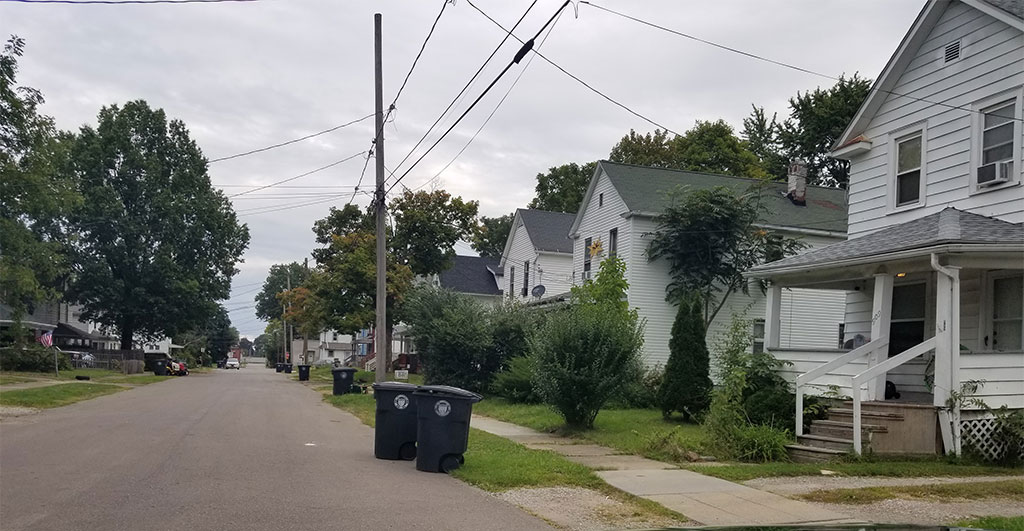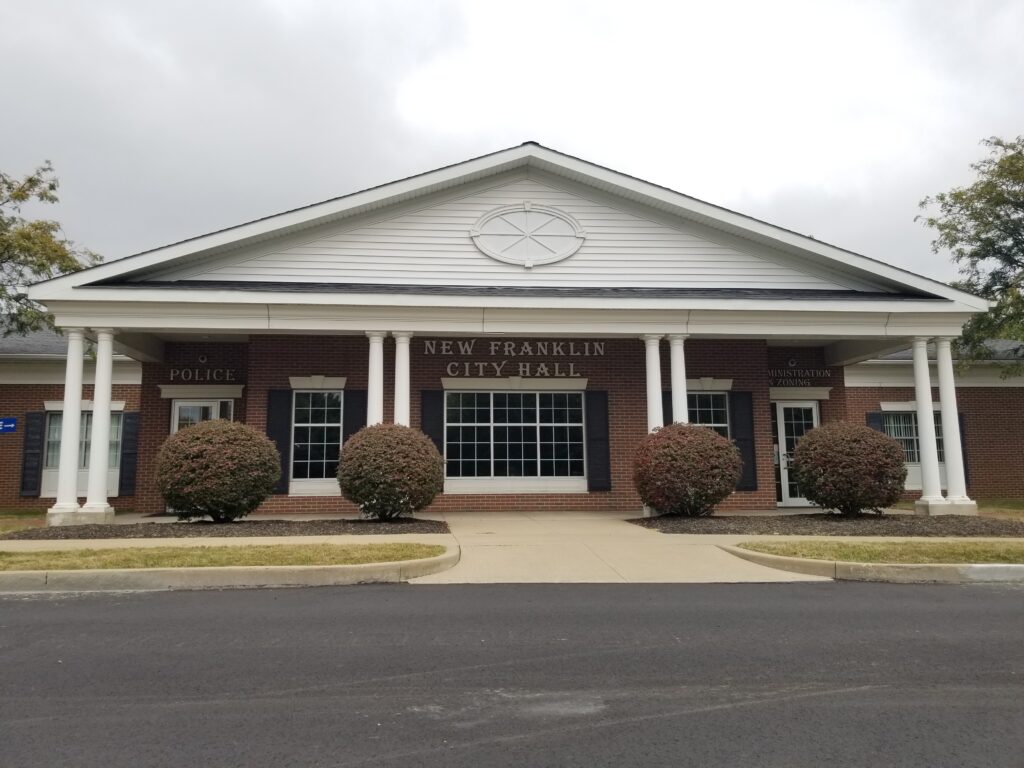
Robbery rates decline across the U.S., but why are some states still struggling with high numbers?
Since 2012. the national average for robbery rates in the United States has been declining. And while most states are mirroring that trend, not all of them are,
Summit County police Sergeant Paul Robinson said Ohio law enforcement has received more support from both the government and the communities they serve.
“Ohio collectively spends around $500 per capita in police enforcement and corrections,” Robinson said. “While this number is not the largest in the United States, it gives departments and officers a decent sum of money to operate with.”
According to MoneyGeek, the United States spends more than $215 billion on law enforcement in 2023, which was an increase of $10 billion from 2022.
“With the funding received via the federal and state governments, departments were also able to increase policing capacity – the number of officers staffed at a department- as well as update and purchase new equipment,” Robinson said.
Over the past decade, robberies in the United States have declined by over 20%, according to the Federal Bureau of Investigation.
In particular, the state of Ohio has seen a decline in robberies of over 60%.
Robberies are categorized as crimes against a person, to differentiate them from burglaries which are crimes against property.
For example, a robbery would be characterized by a masked intruder entering a bank and demanding money from the teller, while a burglary would be a masked intruder breaking into the bank after hours.
“Usually, we see more burglaries than robberies,” Officer Kyle Shover, Akron Police Department, said. “Most criminals that are committing these crimes are looking for an easy dollar, so the easier route is to steal when nobody else is involved rather than steal from an actual person. It’s also much safer… No suspect has ever been shot from a security camera.”

Like Ohio, most states in the region have also seen decreases in robberies as well.
Pennsylvania, for example, has seen a decrease in robberies by 44%, despite seeing rates increase over the past two years. Indiana has also seen a decrease in rates by over 57%.
“Ohio and other Midwest states have seen decreases in robberies for a variety of reasons. The largest reason, I believe, is the threshold for punishments and what is deemed a felony or not. Ohio has a relatively low threshold for a suspect to be charged with felony robbery,” Robinson said.
According to The Marchall Project, Ohio’s felony threshold is $1,000.
In comparison, Indiana’s threshold is $750 while Illinois’ and Kentucky’s are $300. All these states are below the amount of the highest threshold states such as Oregon, Utah and Colorado. These state’s range from $1,500 to $2,500.
This means that the lower the threshold for worth of items stolen, the more likely a person is to get charged with a felony.
“When I started working for Portland’s police department in 2005, we were able to better pursue and investigate robberies… now, we need there to be an assault on the victim or items stolen with large value.”
Oregon City officer Rebecca Bollinger
Since 2020, west coast states like Oregon have seen an increase in robberies compared to the national average.
“It’s more challenging to police these crimes than they were two decades ago,” Oregon City, OR police officer Rebecca Bollinger said. “When I started working for Portland’s police department in 2005, we were able to better pursue and investigate robberies of any type or amount, now, we need there to be an assault on the victim or items stolen with large value.”
Bollinger said that in Oregon City, there has been an increase in robberies since 2020.
“We have seen these types of crimes increase over the past few years, which is alarming for us considering the national average is decreasing. I do believe that a big reason that robbery rates are on the rise is the form of punishment we have here in Oregon,” Bollinger said. “In most instances, criminals get a slap on the wrist and that is it. Because of this, they become more incentivized to continue committing these types of crimes knowing that they really will not face any type of harsh punishment.”
In Oregon, mandatory prison sentences do not begin until the crime is considered a Class B felony. For a robbery to classify as a Class B felony, there must be evidence that shows there were multiple persons involved and/or there is evidence of use of a dangerous or deadly weapon.
According to Oregon robbery defense attorney David Lesh’s website, most robbery charges can be negotiated down in severity via plea deals made between the prosecution and the defendant. This can result in criminals who should face longer harsher sentences getting shorter or no prison time at all.
“More and more people that we book as suspects for robberies are getting off easier and easier, because most courts would rather agree to a plea deal rather than go through the entire process of prosecuting a defendant,” Bollinger said.
In Ohio, all robberies that meet the felony requirements have mandatory prison time.
“The risk outweighs the reward by a wide margin, which acts as a natural deterrent for people thinking of committing a robbery”
Akron Police officer Kyle Shover
Attorney Adam Huntly says that third degree robberies result in a prison term of 1-5 years, with a maximum fine of $10,000. While second and third degree felony robberies result in 2-10 years of prison with a maximum fine of $20,000.
Shover says that having the mandatory prison term for even the lowest degree of felony is a big reason why Ohio has a robbery rate.
“Thinking about it, the $1,000 threshold is low considering the value of items today. Because of this, criminals must weigh the risk to reward ratio when committing such a crime. In most instances, the risk outweighs the reward by a wide margin, which acts as a natural deterrent for people thinking of committing a robbery,” Shover said.
“Looking forward, we believe that the state of Ohio will continue to see a downward trend in the number of robberies within the state,” Sergeant Robinson said. “With technology advancing everyday and things like high definition cameras becoming increasingly affordable for business and private owners, it’s harder and harder for criminals to get away with committing these crimes.”
Bollinger said that she expects her city for start a downward trend in robbery rates, but also acknowledges that her state has a few years to go before Oregon’s numbers get closer to the national average.
“I feel we need tougher penalties against these criminals to deter them from committing these crimes in the first place,” Bollinger said. “We also need to ensure that when we do catch a criminal they are getting charged and not released via plea deals with little to no actual punishments.”
Attorney Adam Huntly suggested that states that are dealing with higher-than-average robbery rates look to incorporate and introduce legislation like Ohio has that creates mandatory prison time for suspects charged with and convicted of committing a robbery.
“[People] should look to call on public officials in enact stricter and harsher penalties against people that commit these crimes.”
Attorney Adam Huntly
“Ohio has done a really good job in recent years with increasing the punishments for these types of offences,” Huntly said. “Over time, more states that are dealing with higher robbery rates will begin to follow in what states like Ohio, Florida and Texas have done. Increasing the penalties and mandatory prison time for these crimes. People in areas of high robbery rates should look at what the penalties are. They will probably be quite surprised at how low the penalties seem and should look to call on public officials in enact stricter and harsher penalties against people that commit these crimes.”


